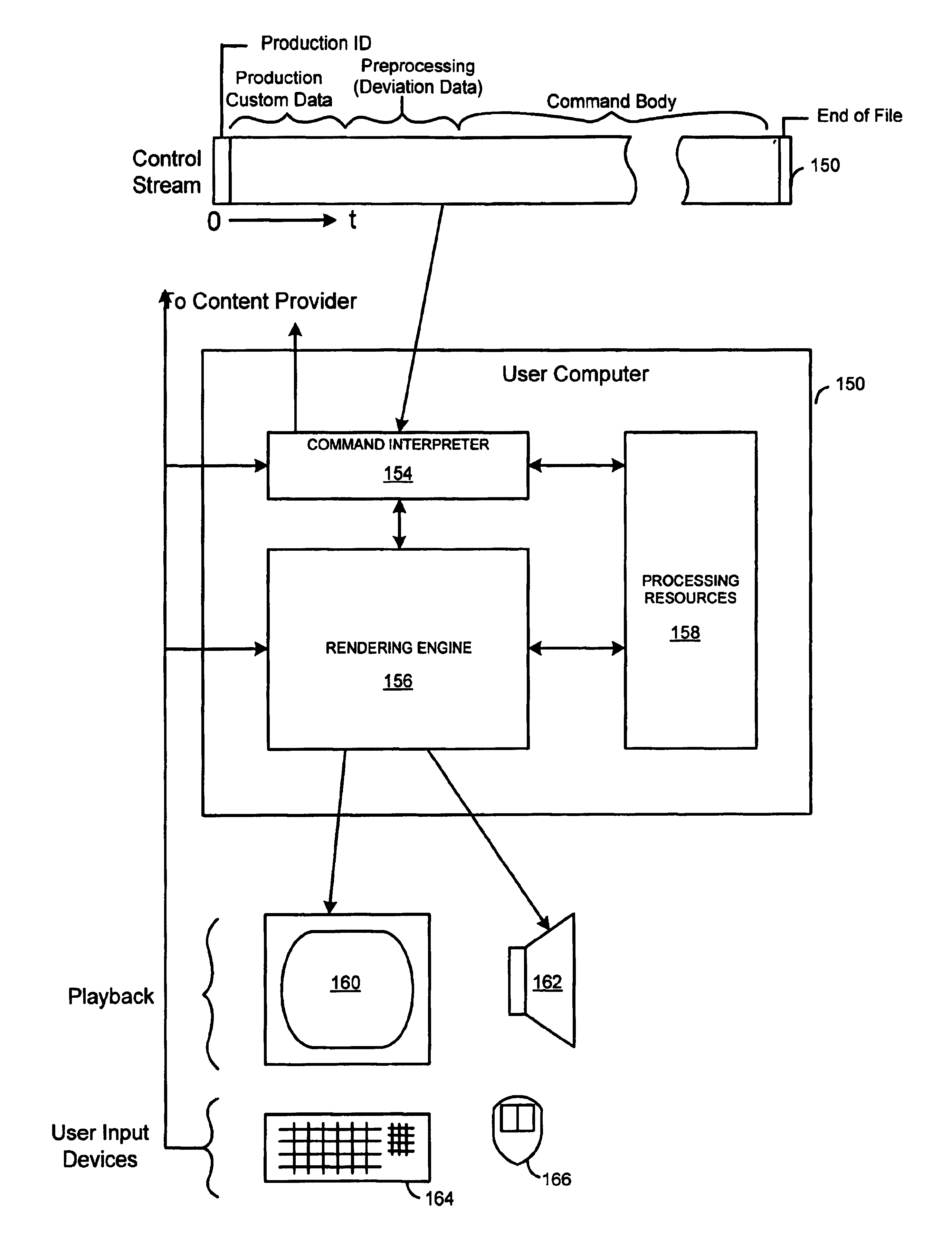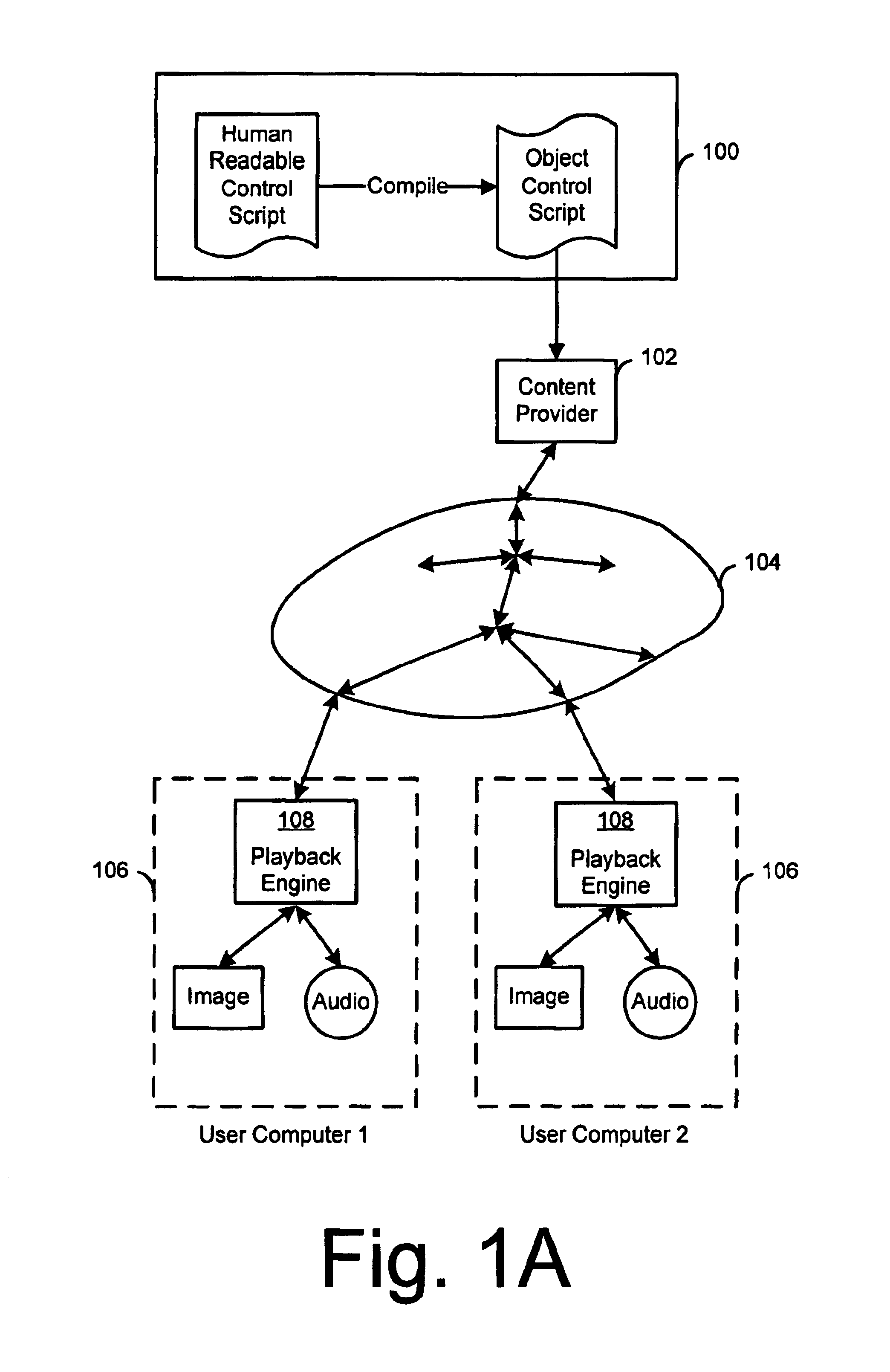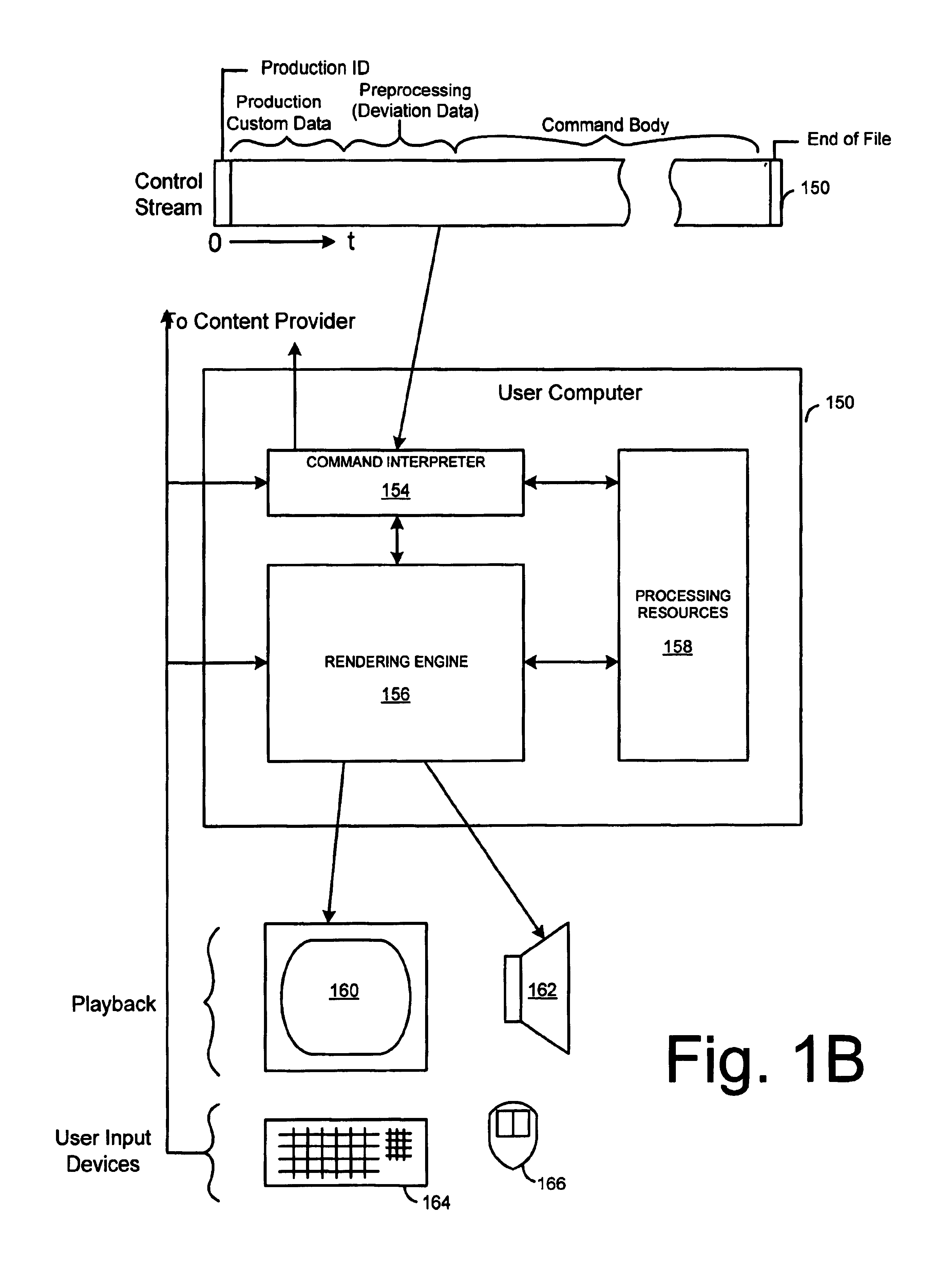Creation and playback of computer-generated productions using script-controlled rendering engines
a script-controlled rendering engine and computer-generated production technology, applied in the field of computer-generated information communication, can solve the problems of over-exhausting the limits of common computing power, data channels, or other resources, and the amount of data that needs to be transferred and displayed is enormous, and achieves the effect of simple use and understanding, and command further simplified
- Summary
- Abstract
- Description
- Claims
- Application Information
AI Technical Summary
Benefits of technology
Problems solved by technology
Method used
Image
Examples
Embodiment Construction
[0034]FIG. 1A shows an overview of the system of the present invention. In FIG. 1A, a writer, or scripter, creates a control script at a computer such as computer 100. The control stream file is stored at server 102. Server 102“streams” the control data over network 104 to end-user, or viewer, computers 106. Each viewer computer includes a rendering engine, or playback engine, 108 to translate the control commands into a media production.
[0035]The playback engine is a software graphics and audio processing program that includes routines to model and render objects, to animate objects, replay sound and perform processing for audio and visual animation an effects. In general, this type of engine can be obtained by modifying a three-dimensional computer game program's engine to allow the engine to be controlled by a control stream of the present invention. Such a design can include a “command interpreter” to handle the conversion of control stream commands into control of the rendering...
PUM
 Login to View More
Login to View More Abstract
Description
Claims
Application Information
 Login to View More
Login to View More - R&D
- Intellectual Property
- Life Sciences
- Materials
- Tech Scout
- Unparalleled Data Quality
- Higher Quality Content
- 60% Fewer Hallucinations
Browse by: Latest US Patents, China's latest patents, Technical Efficacy Thesaurus, Application Domain, Technology Topic, Popular Technical Reports.
© 2025 PatSnap. All rights reserved.Legal|Privacy policy|Modern Slavery Act Transparency Statement|Sitemap|About US| Contact US: help@patsnap.com



